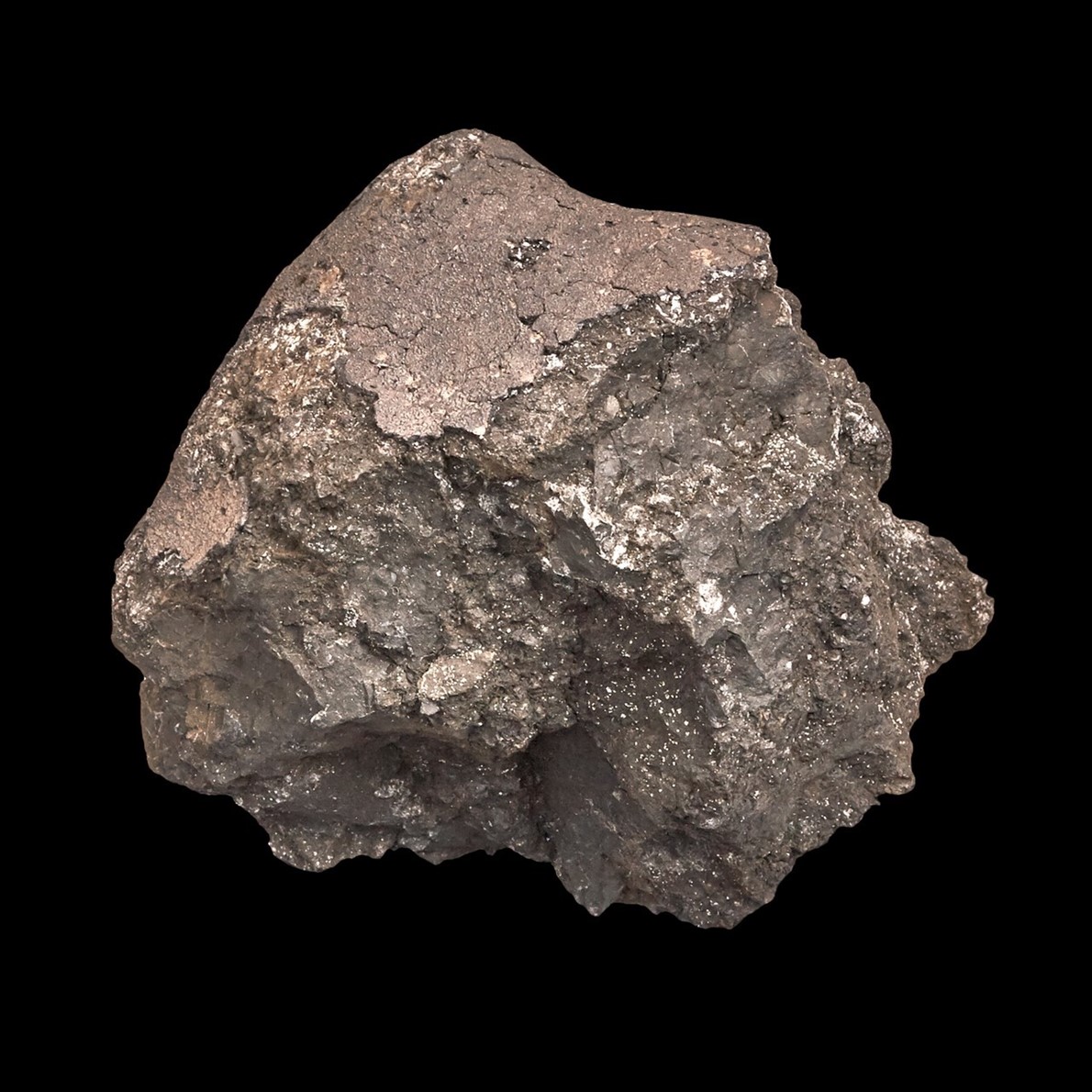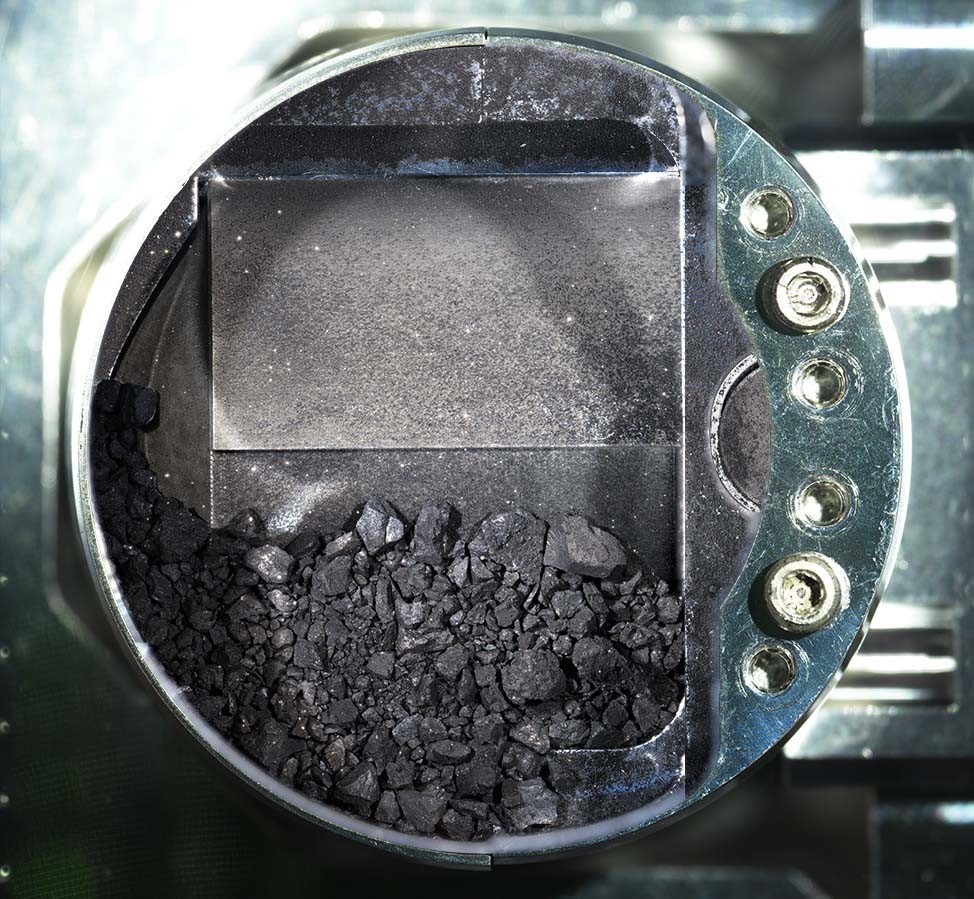Five grams of dark specks brought to
Earth from an asteroid by a
Japanese spacecraft are some of the most pristine bits of a baby solar system
ever studied, scientists announced Thursday.
اضافة اعلان
That fact should help planetary scientists refine
their knowledge of the ingredients in the disk of dust and gas that circled the
sun about 4.6 billion years ago before coalescing into the planets and smaller
bodies.
“We must rewrite the chemistry of the solar system,”
said Hisayoshi Yurimoto, a professor of Earth and planetary sciences at
Hokkaido University in
Japan and the head of the research analysis described in
a paper published by the journal Science on Thursday.
The Hayabusa2 spacecraft arrived at Ryugu, a
carbon-rich asteroid, in 2018. The mission was operated by JAXA, the Japanese
space agency, and spent more than a year studying Ryugu. That included briefly
descending to the surface a couple of times to pick up samples of dirt from the
asteroid and even using an explosive to blast a new crater in its surface.
 An undated photo of a C.I. type of meteorite
that fell to Earth in 1938.
An undated photo of a C.I. type of meteorite
that fell to Earth in 1938.
In December 2020, Hayabusa2 flew past Earth again,
dropping off a small capsule containing the bits of Ryugu in the Australian
Outback.
The mission scientists spent last year studying what
Hayabusa2 had brought back. “It’s a pile of rocks, pebbles, and sand,” said
Shogo Tachibana, a planetary scientist at the University of Tokyo and the
principal investigator in charge of the analysis of the samples. The largest
piece was about 1cm in size, he said. Many of the particles were about 1mm
wide.
Yurimoto’s team received just a smidgen of the
asteroid —140 milligrams.
The biggest surprise from their analysis is that the
bits of Ryugu are a close match to a 0.68kg meteorite that landed in
Tanzania in 1938. The Ivuna meteorite, named after the region it fell in, was of a rare
type. Of the more than 1,000 space rocks that have been found on Earth’s
surface, only five are of the type known as a CI chondrite.
(The “C” stands for carbonaceous, which means
containing carbon compounds, and the “I” stands for Ivuna. A chondrite is a
stony meteorite.)
“It’s super similar,” said Sara Russell, lead of the
planetary materials group at the
Natural History Museum in London who was a
member of the science team on the Hayabusa2 mission as well as a NASA mission,
OSIRIS-Rex, that visited a different carbon-rich asteroid, Bennu. She was an
author on the Science paper.
Of the more than 1,000 space rocks that have been found on Earth’s surface, only five are of the type known as a CI chondrite.
OSIRIS-Rex’s samples from Bennu will arrive back on
Earth next year.
Dating of the Ryugu samples indicated that the
material formed about 5.2 million years after the birth of the solar system.
Russell said carbonaceous chondrites were thought to
have formed in the outer part of the solar system, farther out than the current
orbits of most asteroids. She described them as “basically deep frozen relics
from the early solar system.”
CI meteorites possess a makeup of heavier elements
similar to what is measured at the sun’s surface — like the ratios of sodium
and sulfur to calcium. Thus, planetary scientists thought these were a good
indication of building blocks that filled the early solar system. That provides
key parameters for computer models aiming to understand how the planets formed.
The analysis indicated that the material was heated
early in its history, melting ice to water, which led to chemical reactions
altering the minerals. But the relative amounts of various elements remained
almost unchanged, the scientists said.
 An undated photo of a C.I. type of meteorite
that fell to Earth in 1938.
An undated photo of a C.I. type of meteorite
that fell to Earth in 1938.
That fits in with the picture the Ryugu formed out
of the rubble that was knocked off a much larger asteroid miles in diameter.
(The CI meteorites probably also came from the larger parent asteroid, not
Ryugu.)
The results were “very important,” said Victoria
Hamilton, a scientist at the Southwest Research Institute in Boulder,
Colorado,
who was not involved with the research. “Even though we’ve learned a lot about
the early solar system from meteorites here on Earth, they lack any kind of
context.”
In this case, planetary scientists know exactly
where the samples came from.
The match of Ryugu with CI meteorites was unexpected
because CI meteorites contain a lot of water, and Hayabusa2’s remote
measurements while at Ryugu indicated the presence of some water but that the
surface was mostly dry. The laboratory measurements, however, revealed about 7
percent water, said Tachibana, a co-author of the new Science study. That is a
significant amount for such a mineral.
Tachibana said scientists were working on
understanding the discrepancy.
The scientists also found some differences between
the Ryugu samples and the Ivuna meteorite. The Ivuna meteorite included even
higher amounts of water and contained minerals known as sulfates that were
absent from Ryugu.
The differences could indicate how the mineralogy of
the meteorite changed over decades sitting on Earth, absorbing water from the
atmosphere, and undergoing chemical reactions. That, in turn, could help
scientists figure out what formed as part of the solar system 4.6 billion years
ago and what changed recently in CI meteorites over a few decades on Earth.
“This shows why it’s important to go and have space
missions, to go out and explore and bring back material in a really controlled
way,” Russell said.
This also raises expectations for OSIRIS-Rex’s Bennu
samples, which will land in the Utah desert Sept. 24, 2023. Dante Lauretta,
principal investigator of that mission, chose that asteroid in large part
because it looked like it could be similar to CI meteorites, and OSIRIS-Rex’s
measurements at Bennu indicated more water than what Hayabusa2 observed at
Ryugu. But if Ryugu is already a match for a CI meteorite, that suggests Bennu
might be made of something different.
“So now I’m wondering, ‘What are we bringing back?’ ” said
Lauretta, who was also an author on the Science paper. “It’s kind of exciting,
but it’s also intellectually challenging.”
Read more Odd and Bizarre
Jordan News



